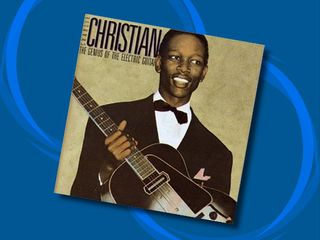
Charlie Christian - Flying Home, Original Guitar Hero (1939)
The March 2008 issue of Guitarist magazine was the publication's 300th issue, and, in celebration, it featured a summation of what its readers, staff and contributors reckoned to be the 50 greatest electric guitar sounds in history.
Genres from grunge to jazz are represented, but before the rundown is revealed in full, Guitarist editor Mick Taylor explains exactly what makes a guitar tone great:
"Is it the abrasive punk rock thrash of Johnny Thunders? The full, fat 'n' fruity blues of Billy Gibbons? Great tone is a divisive issue, but the one common denominator we should agree on is that it's memorable. It might not have changed history, it might not have been the first example of its breed, but a truly great guitar tone is the kind of sound that compels you pick up that guitar and play. Wood, metal, volume, overdrive. Bring it on…"
So, without further ado, we reveal what might just be the ultimate iPod playlist for guitarists, and link to some classic clips along the way. First up, a genuine trailblazer...
The first electric guitar star’s Gibson ES-150 defined jazz tone: neck pickup, warm and clean. Coming as a package with an EH85 amp the outfit cost $150 – the fee Benny Goodman paid Christian, per week, in 1939. “I wanted to be like Charlie Christian,” said George Benson. "I’ve always liked the hot guys."
Listen:
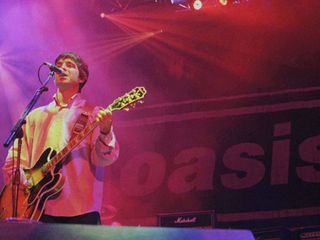
Noel Gallagher - Slide Away, Definitely Maybe (1994)
Noel Gallagher complements his brother’s finest vocal performance perfectly here. Likely played on Johnny Marr’s Les Paul, this soaring solo with plenty of Brit-amp drive inspired countless people to pick up guitars.
Listen:
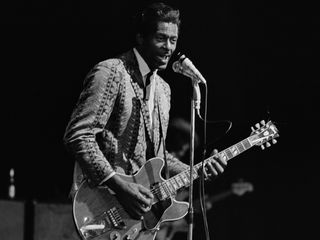
Chuck Berry - Maybellene, Greatest Hits (1955)
The powerful P-90s on Chuck’s Gibson ES-350 make the opening licks sound like they were recorded in a toilet. Pure filth. But this is 1955 and history is being made.
Listen:

Ry Cooder - Sister Morphine, Sticky Fingers by The Rolling Stones (1971)
Though Cooder accused Keith Richards of ripping off his musical ideas shortly afterwards, the product of the ’69 session he played for The Rolling Stones is a milestone in electric slide playing.
His ethereal part on Sister Morphine on 1971’s Sticky Fingers was most likely played on his unusual blue ’67 Stratocaster, with its bound rosewood fingerboard. Eerie, ululating and every bit as soulful as Jagger’s detached vocal, Cooder’s trademark ‘fanning’ slide vibrato shapes his tone as much as his gear.
Listen:
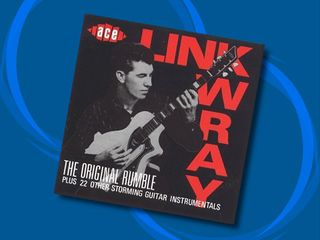
Link Wray - Rumble, The Original Rumble (1958)
This 1958 song’s speaker-slashed powerchords via a ’53 Les Paul and a Premier amp is undoubtedly the very DNA of rock ’n’ roll cool. Pete Townshend: "If it hadn’t been for Rumble, I’d have never picked up a guitar."
Listen:
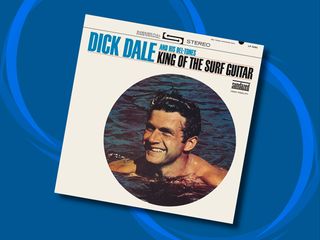
Dick Dale - Misirlou, Surfers' Choice (1962)
The growl of Dale’s frantic vibrato-picked, heavy strung Strat on the bridge pickup into a fully cranked, custom-designed Fender Dual Showman still perfectly captures the highs and lows, and the thunderous roar, of the surf experience.
Listen:
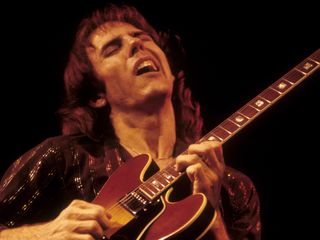
Larry Carlton - It Was Only Yesterday, Larry Carlton (1978)
Larry used a Mk I Boogie and '68 ES-335 to record his eponymous first album. Fat and fruity, no guitar and amp had ever sung so sweet or sustained so long as on this glorious tearjerker.
Listen:
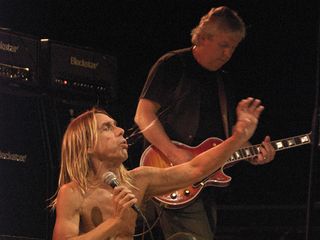
James Williamson - Search And Destroy, The Stooges (1973)
This song’s thunderous, scything, brutal rhythm tone comes courtesy of a Les Paul Custom through a Vox AC30 and not the Marshall stack which Williamson favoured live.
Listen:
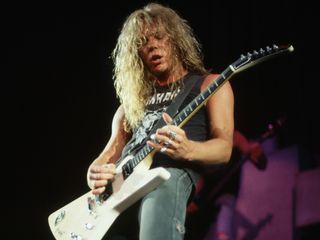
James Hetfield - Orion, Master Of Puppets (1986)
On Master Of Puppets Metallica elevated metal to a higher artistic plane than ever before and Hetfield’s EMG-loaded ESP Explorer and Mesa/Boogie Mk IIC+ (slaved in a Marshall JMP head)-driven, triple-tracked distortion was the perfect match for his peerless right-hand technique. This song allows it to shine with progressive flair.
Listen:
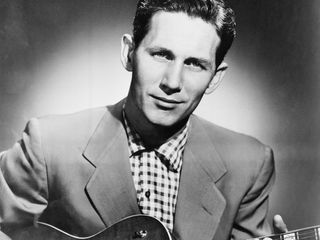
Chet Atkins - Mr Sandman (1955, TV show)
Chet’s early pickin’ tone is just a joy. The original cut was super twangy, almost acoustic, but better is a US TV show version circa 1955: Chet, first-version Gretsch 6120 with DynaSonic pickups, slapback… Dream tone.
Listen:
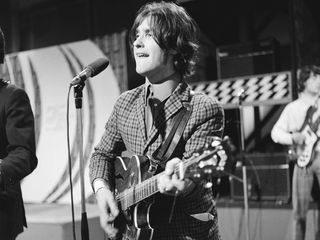
Dave Davies - You Really Got Me, Kinks (1964)
Arguably the riff that single-handedly anticipated both punk and heavy metal, its raucous distorted tone was created by Davies slashing his £6 Elpico amplifier’s speaker cone.
Listen:
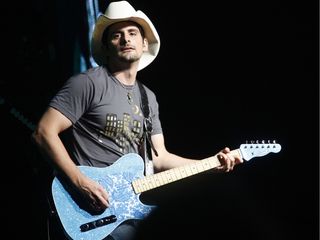
Brad Paisley - Me Neither, Who Needs Pictures (2001)
Five seconds into this up-tempo tongue-in-cheek country love song, Paisley twangs himself to the top of the all-time country pickers tone list.
Brad’s ’68 Fender Paisley Telecaster goes through 1962 and 1960 Vox AC30s, with a little slapback echo from a Way Huge Aqua Puss delay. Immense hybrid picking with snap and bounce aplenty, plus a touch of vintage-style overdrive courtesy of the amps. Sick player, even sicker tone.
Listen:
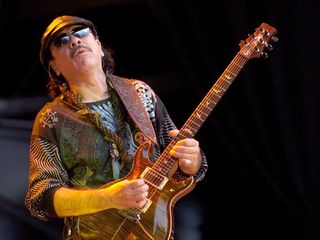
Carlos Santana - Black Magic Woman/Gypsy Queen, Abraxas (1970)
A Gibson Les Paul Special through either a Fender Princeton or a Mesa/Boogie amp, for this solo Santana plays across the Latin rhythm and rides the volume knob throughout the track to add sustain and distortion as required.
Listen:
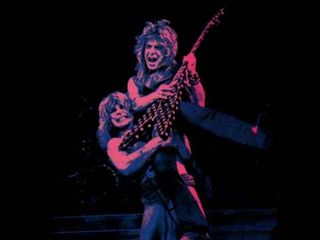
Randy Rhoads - Suicide Solution, Blizzard Of Ozz (1980)
In the studio Randy dropped the voltage of his Marshall heads to around 92 to add breadth to the distortion, then a wah to increase the abrasive treble he so enjoyed.
Listen:
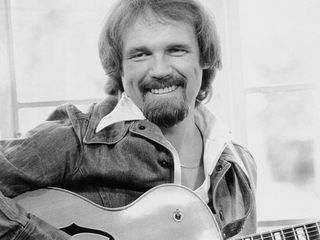
Duane Eddy - Peter Gunn (1960)
John Fogerty called him “the first rock ’n’ roll guitar god”. The King of Twang’s signature sound employed a Gretsch 6120 with Bigsby through a 100-watt Magnatone amp – and a steel water tank for reverb!
Listen:
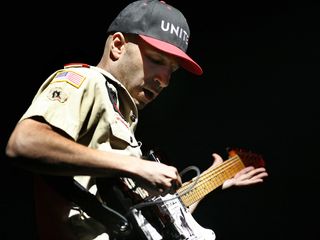
Tom Morello - Killing In The Name, Rage Against The Machine (1993)
Morello’s sci-fi DigiTech Whammy-assisted solo is just as revolutionary here as Zach de la Rocha’s lyrical polemic. A Telecaster into a Marshall has rarely sounded so arresting.
Listen:
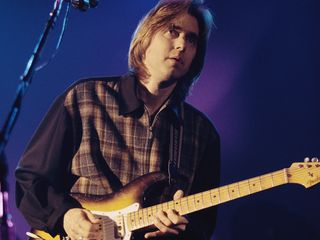
Eric Johnson - Cliffs Of Dover, Ah Via Musicom (1990)
Eric’s jaw-dropping big-interval pentatonics rely on this massive tone. As he told Guitarist in a 1991 interview, the lead part is a Gibson ES-335 as he preferred the thicker sound of the third and fourth strings.
Eric goes via a Chandler Tube Driver, plus 320ms delay from an Echoplex, into his ’69 non-master volume Marshall. “I only like the Marshalls manufactured in ’68 and ’69,” he said.
Listen:
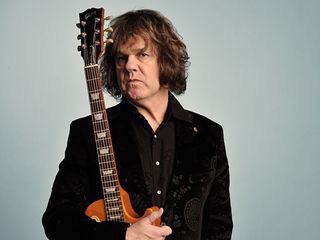
Gary Moore - Still In Love With You, Nightlife by Thin Lizzy (1974)
This classy Lynott slow blues had Gary’s ‘Peter Green’ Les Paul, original UniVibe and 100-watt H&H amp singing sweetly, the neck pickup just pushing the amp’s front end into natural overdrive. Simple. Fabulous!
Listen:
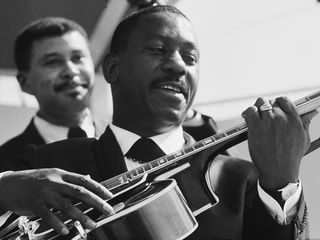
Wes Montgomery - D-Natural Blues, The Incredible Jazz Guitar Of Wes Montgomery (1960)
An octave melody line with a tone as smooth as melted chocolate, Montgomery brushes the strings of his deep-bodied Gibson L-5CES archtop just behind the guitar’s single forward humbucker with the fleshy part of his thumb.
Later in the solo Montgomery uses the callus on his thumb to add grit to his tone. "He would get one sound from the soft parts and another by using the corn," mused George Benson. "That’s why no one will ever match Wes."
Listen:
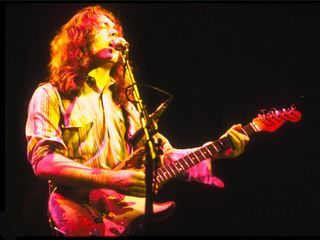
Rory Gallagher - Walk On Hot Coals, Irish Tour (1974)
Gallagher pulls out every trick in the book. Fearless, with no help from pedals, it’s just Rory, his clean-toned Strat, AC30, passion and talent against the world.
Listen:
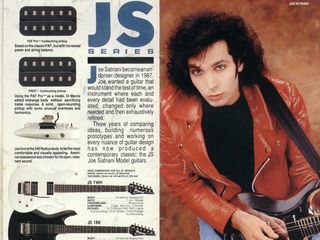
Joe Satriani - Ice 9, Surfing With The Alien (1987)
With a svelte smoothness to the solo section, Satch recorded the majority of his breakthrough album with a Kramer Pacer rather than the Ibanez 540 Power many fans believe was used.
Listen:
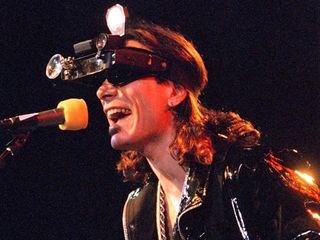
Steve Vai - Touching Tongues, Sex & Religion (1993)
Vai’s use of Ibanez, Charvel, Marshall and Carvin amps and guitars is well documented, but as this song shows, the first port of call for his unique tone is actually a wah pedal.
Listen:

Matt Bellamy - Plug In Baby, Origin Of Symmetry (2001)
Muse’s second album saw Bellamy establish himself as one of the most innovative guitarists of his generation. Lead single Plug In Baby’s snaking classical-influenced intro riff, played using a Hugh Manson custom electric with a built-in Z Vex Fuzz Factory circuit, was soon to be heard in guitar shops across the land.
2004 would see Muse’s surging rendition of the song during their headline set give a certain Mr McCartney a serious run for his money in the battle for highlight of the Glastonbury weekend.
Listen:
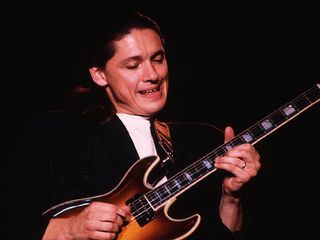
Robben Ford - Talk To Your Daughter, Talk To Your Daughter (1988)
A breath of fresh air for bluesers, this is Ford’s Fender Ultra Esprit into his Dumble Overdrive Special. Plenty of gain, but still expressive and dynamic: tasty.
Listen:
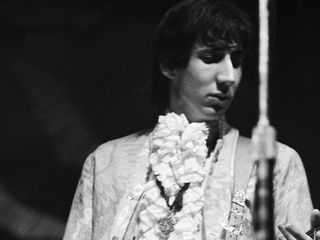
Pete Townshend - Pinball Wizard, Tommy (1969)
Starts with a heavy plectrum and an energetic hammer-on as PT gives it large on a 1968 Gibson SG Special through a Sound City 100W head and a matching 4 x 12 cab - then changes to subtle harmonics around the lead vocal.
Listen:
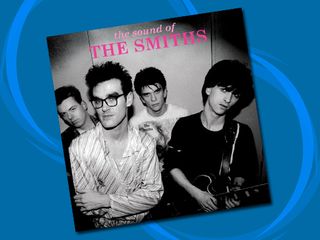
Johnny Marr - How Soon Is Now?, Meat Is Murder (1984)
The simple chordal riff is Marr’s finest moment and his most immediately recognisable sound. It was played backwards through four Fender Twin Reverbs, with vibrato turned to 11, adjusted in real time to the track tempo.
Add a layered slide enhanced with a harmoniser "set to some weird interval like a 6th" and a percussive ringing melody line using multi-tracked 12th-fret harmonics on a re-tuned guitar, for three signature tones in one.
Listen:
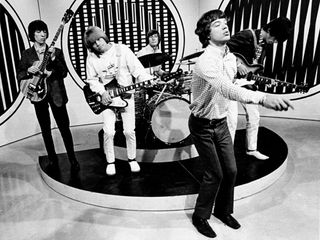
Keith Richards - (I Can't Get No) Satisfaction, Out Of Our Heads (1965)
Tonal purist Richards’ most electrifying contribution still remains the time a Maestro Fuzz-Tone, made by Gibson, dropped in his lap to immortalise the opening riff of Satisfaction with trailblazing tone!
Listen:
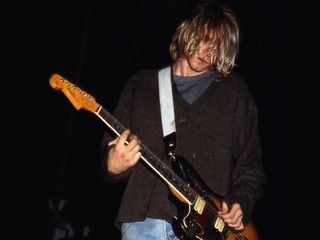
Kurt Cobain - Smells Like Teen Spirit, Nevermind (1991)
Few songs can boast an impact on the scale of Smells Like Teen Spirit, and few guitarists inspired more people to pick up guitars in the 1990s than Kurt Donald Cobain.
As the scratchy intro riff explodes into moshpit-igniting fury, there’s something truly primal about that gutwrenching wall of sound. The distorted guitars - either a humbucker-loaded 1965 Jaguar or a hot-rodded Strat - saw producer Butch Vig layering several takes using both Kurt’s stage rig - a Boogie Studio preamp, Crown power amp and BOSS DS-1 - and a hired Silverface Fender Bassman.
Listen:
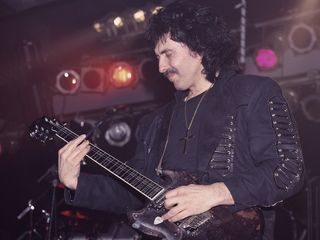
Tony Iommi - Iron Man, Paranoid (1970)
Iommi’s quest for an original tone led him to drive his Laney Supergroup 100 with a Vox Rangemaster Treble Booster. The result is a satisfyingly nasty and heavy sound, especially considering he was playing his SG strung with 0.008-gauge strings and in standard tuning!
Listen:
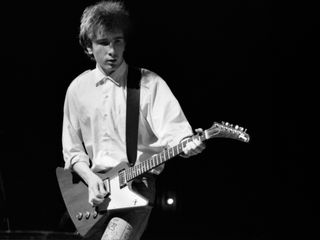
The Edge - Bad, The Unforgettable Fire (1984)
Hypnotic, chiming delayed lines and utterly perfect timing provide the essential counterpoint that the whole song swirls around. Classic Edge - and he’s still tight-lipped on the exact set-up he used. Aim for 472ms to get close though.
Listen:
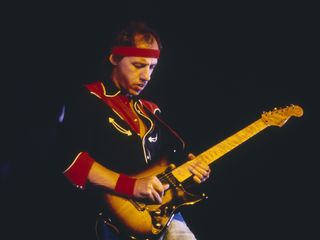
Mark Knopfler - Money For Nothing, Brothers In Arms (1985)
Les Paul Junior + Laney amp = chicks for free. "We were going for a ZZ Top sound, but what we ended up getting was kind of an accident," recalls producer Neil Dorfsman.
Listen:
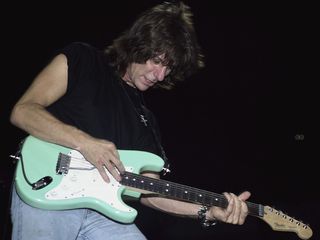
Jeff Beck - Where Were You, Jeff Beck's Guitar Shop (1989)
Few pieces combine technique and equipment to the heights this iconic instrumental that uses a Fender Stratocaster (from Seymour Duncan and fitted with his pickups) and a Rat distortion pedal plugged into a Marshall 100-watt amp.
Without pick encumbrance, Beck manipulates the vibrato arm (set to a minor third up-bend on the third string), switches pickups (mostly bridge single-coil) and swells the volume (never on maximum though) and tone dials so notes bloom in volume. A wake-up call for players such as Joe Satriani, Steve Lukather and the late Shawn Lane.
Listen:
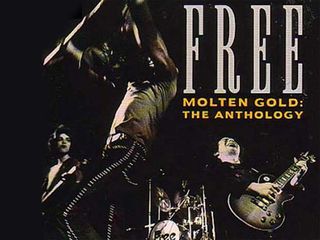
Paul Kossoff - My Brother Jake, Highway by Free (1970)
On the video he played a Strat, but the fat fills on this were Les Paul neck pickups and Marshall. Clapton once asked Koss to show him that vibrato. "What, me show you stuff?" came Kossoff’s astonished reply…
Listen:
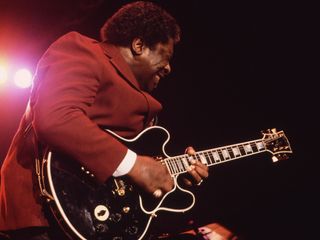
BB King - When Love Comes To Town, Rattle And Hum by U2 (1988)
The King of the Blues has only two hands, but a hundred tones. This glorious clean-but-dirty sound was BB’s Gibson ‘Lucille’, likely through a Lab Series amp.
Listen:
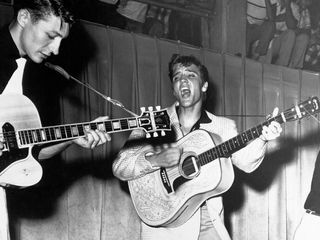
Scotty Moore - Hound Dog, Greatest Jukebox Hits by Elvis Presley (1956)
Scotty’s P-90-equipped Gibson L-5 and Ray Butts amp growl into life as the first solo starts down on the low notes. The bridge pickup is almost distorting, just on the verge of breaking up, and when the lick hits the top strings anyone with a spine can feel it tingle. Timeless!
Listen:
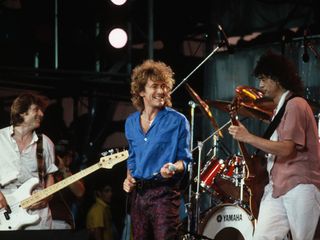
Jimmy Page - Whole Lotta Love, II (1969)
The classic intro is a loose blues riff played on a Sunburst 1958 Les Paul Standard through a 100W Marshall ‘Plexi’ head with characteristically warm but gritty distortion from the EL34 output valves. Expressive rather than exact playing, subtly doubletracked in unison with a rumbling bass.
Listen:
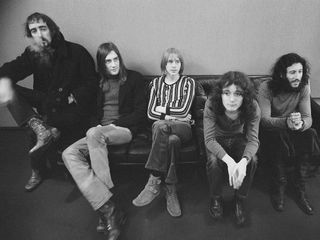
Peter Green - Stop Messin' Around, Mr Wonderful by Fleetwood Mac (1968)
Peter’s famous out-of-phase Les Paul tone hits you as the track opens, his playing sounding confident and strong. Nasal and reverb-free, Greeny had finally found his voice.
Listen:
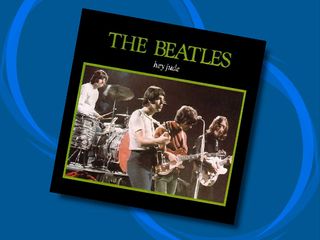
George Harrison - Something, Abbey Road by The Beatles (1969)
George re-recorded his best break on his best song, just to change the tone. He replaced his earlier solo using ‘Lucy’, the ex-Clapton Les Paul, through a Fender amp.
Listen:
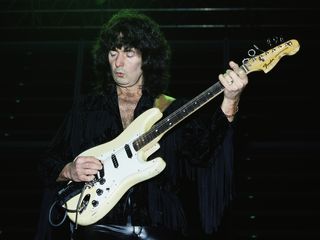
Ritchie Blackmore - Long Live Rock 'N' Roll, Long Live Rock 'N' Roll by Rainbow (1978)
Blackmore, like many players, was inspired to take up the Strat after seeing Jimi Hendrix in concert and soon bought a second-hand Fender from, so the story goes, Eric Clapton’s guitar tech of the time.
He only ever uses the bridge or neck pickup, and many of his most classic riffs such as this see him plucking the strings with his finger to obtain his classic snappy attack. Amps almost always comprised modified Marshall Major heads, units discontinued in 1974. He now uses Engl amps when not behind a lute…
Listen:
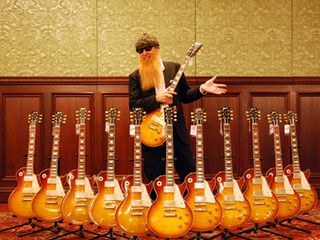
Billy Gibbons - Gimme All Your Lovin', Eliminator by ZZ Top (1983)
Theoretically recorded with Billy’s 1959 ‘Pearly Gates’ Les Paul and a Marshall JMP-1 preamp, perhaps it was actually a Tokai single-cut and six Bixonic Expandora stompboxes…
Listen:
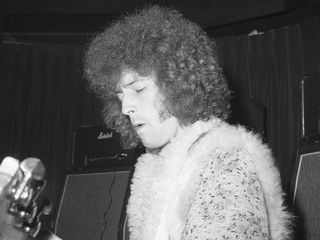
Eric Clapton - I Feel Free, Fresh Cream (1966)
It’s Eric playing Cream with a borrowed Les Paul (his Beano one was stolen during album rehearsals) and a new, 100-watt Marshall. The solo starts using ‘woman’ tone - pickup full, tone off. Unique at the time - we were used to whining Gretsches and tinkly Rickies – this was BIG.
The warm, fat tone suited Eric’s weird choice of notes. Was he bending sharp? Who cared! And then he flips to the bridge pickup and climaxes with a head-slicing Albert King steal. Classic!
Listen:
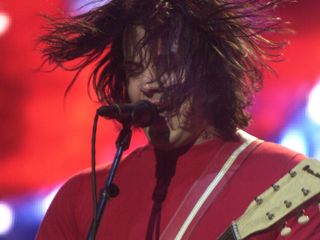
Jack White - Dead Leaves And The Dirty Ground, White Blood Cells (2001)
There are plenty of good reasons why Jack White’s tone soars: the stripped-down, bass-free set-up, the combination of rare Silvertone 2 x 12 and Fender Twin Reverb, his 1964 JB Hutto Model Montgomery Airline fresh from some retro-futuristic guitar catalogue, his thumb-and-fingers approach…
Another is FX – witness Blue Orchid’s Electro- Harmonix POG octave antics. But surely no record on earth makes you want to stomp on a Big Muff more than Dead Leaves… with its wailing, feedback-conjuring main riff?
Listen:
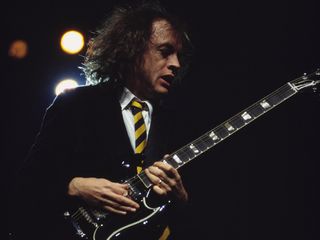
Angus Young - Highway To Hell, Highway To Hell (1979)
An iconic tone that locks in with brother Malcolm’s for classic rock perfection. The marriage of his Gibson SG and Marshall JTM45 gives the legendary crunch; enough drive and sustain to sound fat, yet with great note definition and clarity.
Then there’s the solo: Angus wears his Chuck Berry influences on his blazer sleeve but the raunchiest of raunchy tones is a typically nononsense affair. There are no effects whatsoever, so with a humbucker, some valve overdrive and a truck-load of volume, we can all get close for some duckwalking thrills of our own.
Listen:
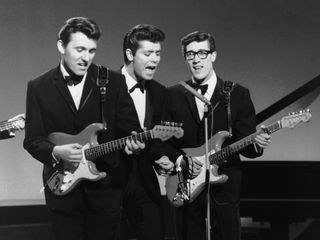
Hank Marvin - Wonderful Land, The Shadows Are Go (1962)
Hank gets a hard time for his ‘simplistic’ playing and ‘basic’ clean sound. Basic? On Wonderful Land hear how he conjures the tone from picking by the neck of his Strat; and how perfectly each note is formed like an individual work of art.
And that muted bridge section, fuelled by Hank’s signature, tripping echo into a Vox. Peter Frampton knows: "Yeah, Hank asked me what was my favourite Shads number. It has to be Wonderful Land for its melody and sound."
Listen:
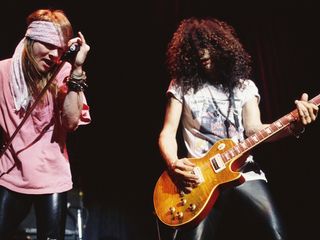
Slash - Welcome To The Jungle, Appetite For Destruction (1987)
Truly the stuff of guitar legend: running out of time and booked into a studio to re-record his parts for Guns’ debut after being unsatisfied with the first attempts, Slash, a '59 Les Paul replica made by the late Kris Derrig, a mythical modified hired Marshall JCM, some mic tinkering, and Jack Daniels created a tone as vicious as it was pure. Impossible to recreate.
Listen:
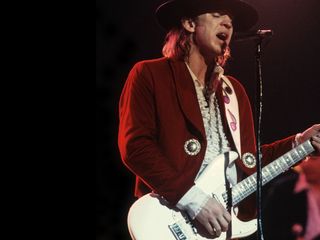
Stevie Ray Vaughan - Couldn't Stand The Weather, Couldn't Stand The Weather (1984)
Of Stevie Ray’s many finest hours, tonally speaking, the standout is the blistering solo tone on the title track of Couldn’t Stand The Weather – unparalleled for fire and finesse anywhere else in his recorded career.
Surprisingly, that molten tone over brother Jimmie Lee’s B minor chord breakdown isn’t played on ‘Number One’ either - instead, it’s the bridge pickup of ‘Charley’, a white Strat-style guitar (with a rosewood neck and three Danelectro lipstick tube pickups) through two ’63 Fender Vibroverbs (five and six off the production line), a 150-watt Howard Dumble Steel String Singer, a Fender Vibratone supplying the rotating-speaker simulation and soul to burn. The essence of SRV? It’s right here.
Listen:
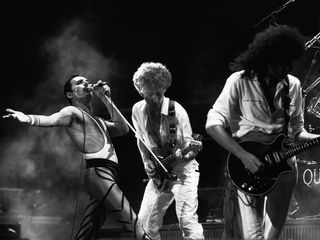
Brian May - Play The Game, The Game (1980)
The basic premise behind May’s monstrous tone comprises two separate stages of signal boost in front of the amp. The first comes from his unique guitar, which allows for the combination of up to three single-coils in series, rather than parallel. The signal then runs to a treble booster, more recently built by Greg Fryer. May used Vox AC30s even before Queen were formed and this double-boosted signal is fed into amps that are run at absolutely full volume.
The solo from Play The Game is a lesser-known yet perfect example of the aural results of this unusual set-up: only the songs Crazy Little Thing Called Love and Long Away (from 1976’s A Day At The Races) from the Queen canon are bereft of the classic set-up.
Listen:
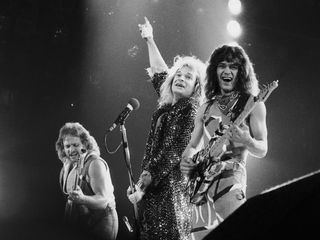
Eddie Van Halen - Sinner's Swing, Fair Warning (1981)
Taken from VH’s difficult fourth album, you can hear the anger in Eddie’s playing. As a youngster he knew exactly how to obtain the tone he was after and even after he discovered the stock 1967 Marshall SLP head with which he made his ‘brown’ sound famous, he found that lowering any all-tube amp’s voltage from 110 to around 96 by way of a Variac drove the power tubes to a musical saturation he couldn’t ignore.
Probably using the Frankenstein guitar, there’s rarely been a better example of great tone residing mostly in the fingers of the player in question.
Listen:
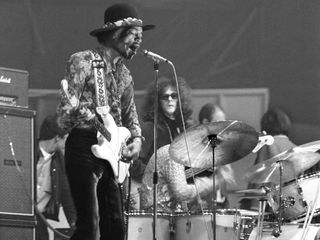
Jimi Hendrix - Voodoo Child (Slight Return), Electric Ladyland (1968)
No one had heard a guitar ‘talk’ like Jimi’s wah-wah intro to this classic. Then the sonic tsunami hits – Strat and Marshall cranked to 12. It’s titanic. The third-string bend breaks into feedback and it’s like the Four Horsemen just rode over your grave!
"I saw him live," recalled renowned tone hound Eric Johnson. "They backed a Cadillac up to the stage and he was doing Voodoo Child. He set his guitar down and it fed back with a perfect E, he got in the Caddy and he was gone. I was totally blown away!" Voodoo Child - the almighty tone of God and the Devil!
Listen:
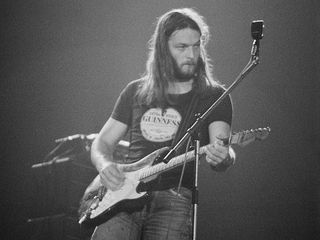
David Gilmour - Comfortably Numb, Pink Floyd: The Wall (1979)
A regular candidate for Best Guitar Solo Of All Time, Gilmour’s second solo on Comfortably Numb is also a powerhouse of majestic, soaring guitar tone.
At the peak of his creative powers during the recording of The Wall, on Another Brick In The Wall (Part II) he had explored the opposite end of the electric lead tone spectrum: for that, he’d dispensed with his trusty Strat, and DI’d his 1955 Les Paul Goldtop with P-90s straight into the mixing desk before compressing it to create the taut, rapid-attack sound heard on the record: "That’s just Dave direct," producer Bob Ezrin explains, "with a little compression - we used a form of double compression."
"First we put the guitar through a very aggressive limiting amplifier, compressed that output, and overdrove it. The limiting amplifier makes it pop, and the compressor gives it a kind of density, the sound of being right in your face."
In our faces in a different way is the majestic tone used for the solos in Comfortably Numb. It was played using a heavy pick, his iconic black Fender Strat with maple neck through a Big Muff and delay via a Hiwatt amp and a Yamaha RA-200 rotating speaker cabinet. As ever, the essential ingredient is Gilmour’s technique. "You can give him a ukulele and he’ll make it sound like a Stradivarius," Ezrin says. "He’s truly got the best set of hands with which I’ve ever worked."
Gilmour’s guitar tech Phil Taylor concurs: "It really is just his fingers, his vibrato, his choice of notes and how he sets his effects. I find it extraordinary when people think they can copy his sound by duplicating his gear." Soaring, triumphant, emotional - this above all the other tones in this list is the sound that most people hear when they first fantasise about playing lead guitar… and that’s why it wins.
Listen:
Liked this? Now read: The Top 50 Guitar Riffs Of All Time
Connect with MusicRadar: via Twitter, Facebook and YouTube
Get MusicRadar straight to your inbox: Sign up for the free weekly newsletter

Guitarist is the longest established UK guitar magazine, offering gear reviews, artist interviews, techniques lessons and loads more, in print, on tablet and on smartphones Digital: http://bit.ly/GuitaristiOS If you love guitars, you'll love Guitarist. Find us in print, on Newsstand for iPad, iPhone and other digital readers

“A wealth of features not seen before in a Klon-style pedal”: Walrus Audio’s Voyager MKII overdrive/preamp takes Centaur stage – equipped with footswitchable parametric mids, it promising “mythical magic” and absolute clarity

“With proper playing dynamics, this creates a very cool effect that can sound like an exploding amp coming in and out of life”: EarthQuaker Devices and Lee Kiernan of IDLES introduce Gary, a drive/fuzz wildcard for maverick tone-seekers

“A wealth of features not seen before in a Klon-style pedal”: Walrus Audio’s Voyager MKII overdrive/preamp takes Centaur stage – equipped with footswitchable parametric mids, it promising “mythical magic” and absolute clarity

“With proper playing dynamics, this creates a very cool effect that can sound like an exploding amp coming in and out of life”: EarthQuaker Devices and Lee Kiernan of IDLES introduce Gary, a drive/fuzz wildcard for maverick tone-seekers
Most Popular








